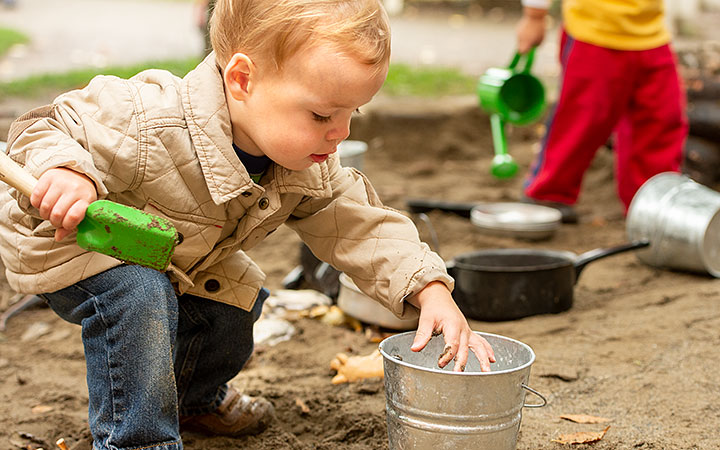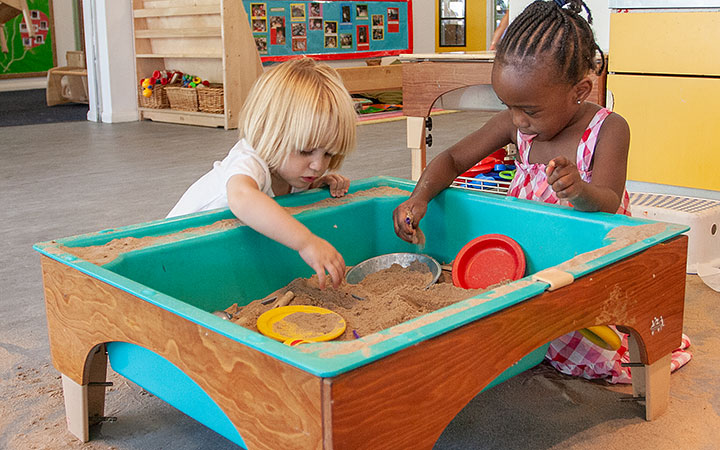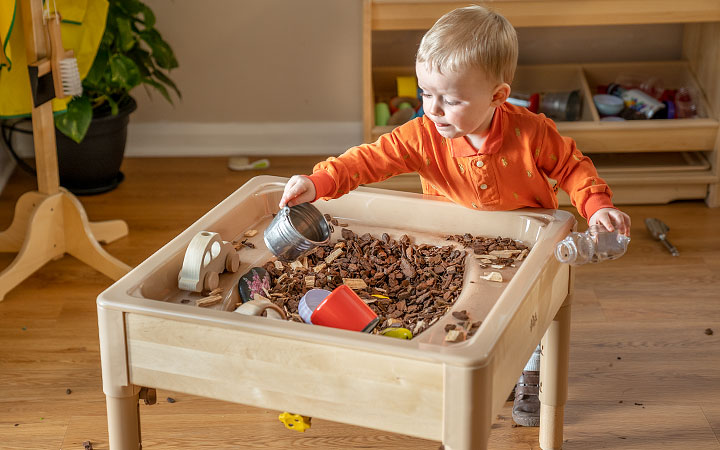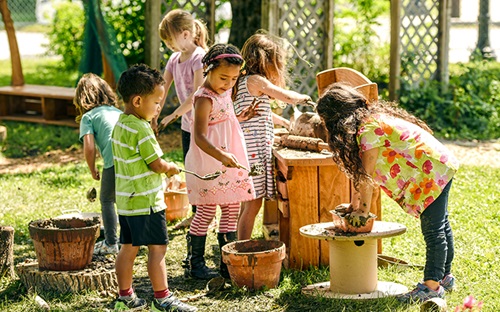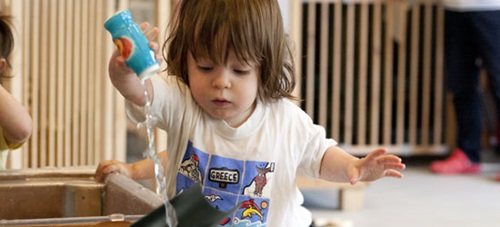Arranging and equipping the sand and water area
| June 2012From infancy to adulthood, people enjoy sand and water. Young children like to play with sand and water and find such play satisfying. They enjoy mixing, stirring, heaping, dumping, digging, filling, emptying, pouring, patting, sifting, moulding, and splashing, as well as making pretend cakes, houses, roads, and lakes for floating boats. Children in the sand and water area play by themselves, next to others, with friend, or in a play group.
Location
Under the most natural conditions, the sand and water area is a shallow outdoor pond surrounded by sand where children can dig trenches, make mud pies, float sticks, wade, and splash. An outdoor sandbox and a hose or hand-pump serve the same purpose.
Indoors, the sand and water area generally centres around a table lined with plastic with a stoppered hole for drainage. Locating this table close to a sink makes it easier for children to add water, and positioning it away from a wall allows children to play on all four sides.
A tile floor aids cleanup. Otherwise, you can cover the floor with a sheet of heavy plastic or a shower curtain.
Children tend to work around the sand and water table with their backs to the surrounding play space. Therefore, physical boundaries are not essential to give the children a sense of being in a specific area. On the other hand, low shelves on one or two sides of the table protect children from traffic interference and also provide storage space for sand water play materials.
Materials
Sand and water play materials include containers, tools, and toys for filling and emptying, floating, and pretending; alternatives to sand and water; waterproofing gear; and cleanup tools. Children will also bring things to the sand and water area from other areas, such as rubber dolls from the house area to bathe and boats they have made at the workbench.
Accessible storage
One of the easiest ways to store sand and water play materials is by sorting them into labelled tubs. Put the buckets and other containers in a tub labelled with a picture of containers, put the shells in a basket labelled with a shell, and so forth. If the sand and water table is next to a wall, it may be possible to have some materials on hooks attached to the wall or a pegboard. For example, you might hand the whiskbrooms and dustpans over tracings of each one.
Sand and water area materials:
Fill-and-empty materials
- Buckets
- Plastic food containers
- Plastic pump and squeeze bottles, poultry basters
- Measuring cups
- Plastic tubing
- Strainers, colanders, funnels
- Cake pans, muffin tins, plates, spatulas
- Shovels, trowels
- Scoops, spoons
Floating materials
- Corks, sponges
- Stones, shells
- Popsicle sticks, twigs
- Styrofoam bits and pieces
Pretend-play materials
- Rubber animals and people
- Plastic dishes
- Boats
- Cars, trucks, and construction vehicles
Alternatives to sand and water
- Chestnuts, leaves, pine needles
- Shells
- Pebbles and stones
- Pea gravel
- Marbles
- Snow Water and soap bubbles
- Shaving cream
Waterproof gear and cleanup materials
- Waterproof smocks
- Rubber boots and waders
- Towels, sponges
- Whiskbroom and dustpan
- Battery-operated hand-held vacuum
Used with permission from Educating Young Children: Active Learning Practices for Pre-school and Child Care Programmes (2nd Ed.), (p.124-125) by Hohmann, M. and Weikart, D, 1995, Ypsilanti, MI: High/Scope Press.

